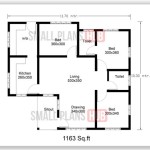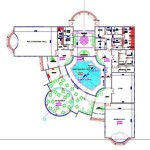House Plans for Small Country Homes: A Visual Guide
The allure of country living often stems from a desire for tranquility, connection with nature, and a simpler way of life. Building a small country home can be an ideal way to achieve this, offering a comfortable and manageable living space without the burden of unnecessary square footage. Accessing free house plans, particularly those which are accompanied by pictures, can be an invaluable resource during the initial planning stages. These visuals offer a tangible representation of layout possibilities, design aesthetics, and potential spatial relationships before committing to detailed architectural drawings and construction.
Numerous online resources provide access to free house plans. However, it’s crucial to approach these with a critical eye. Free plans often lack the detailed specifications and engineering assessments required for permitting and safe construction. They serve best as inspiration and a starting point for discussions with architects and builders. Examining photos and renderings associated with these plans allows homeowners to visualize the finished product and discern if the style and layout align with their needs and preferences. This article explores the benefits of using freely available house plans and associated images for small country homes, highlighting key considerations and potential challenges.
Understanding the Benefits of Visual House Plans
Visual house plans offer a tangible representation of the design, making it considerably easier to understand compared to solely relying on blueprints or textual descriptions. The primary benefit lies in the ability to immediately grasp the spatial arrangement and flow of the house. A picture can quickly convey the relationship between rooms, the positioning of windows and doors, and the overall aesthetic. This visual understanding is particularly important when considering small country homes, where efficient space utilization is paramount.
Furthermore, visual representations assist in envisioning the lifestyle within the home. By viewing images of a proposed design, homeowners can better assess how the layout will accommodate their daily routines and activities. They can imagine furniture placement, traffic flow, and the overall ambiance of different spaces. This process can highlight potential issues or opportunities that might otherwise be overlooked when only reviewing abstract architectural drawings.
Free house plans accompanied by pictures also serve as a powerful communication tool. They facilitate clear and concise discussions with architects, builders, and other stakeholders involved in the project. By sharing images, homeowners can easily convey their design preferences and expectations, minimizing the risk of miscommunication and ensuring that the final product aligns with their vision. These visuals also help in obtaining preliminary cost estimates, as builders can better understand the scope and complexity of the project when presented with a clear visual representation.
Key Design Considerations for Small Country Homes
The design of a small country home necessitates careful consideration of space optimization, functionality, and integration with the surrounding environment. Given the limited square footage, every element of the plan should serve a purpose and contribute to the overall livability of the home. Prioritizing open-concept layouts can maximize the feeling of spaciousness and promote natural light penetration. Combining living, dining, and kitchen areas into a single, unified space eliminates unnecessary walls and creates a more fluid and inviting atmosphere.
Effective storage solutions are crucial in small country homes. Built-in cabinetry, shelving, and multi-functional furniture can help to minimize clutter and maximize usable space. Utilizing vertical space through high ceilings and loft areas can also add valuable storage and living areas without increasing the footprint of the home. Integrating outdoor living spaces, such as porches and patios, can extend the usable living area and provide a seamless connection with the surrounding landscape.
The architectural style of the home should be consistent with the country aesthetic and blend harmoniously with the natural environment. Traditional farmhouse designs, rustic cabins, and cottage-style homes are popular choices for small country homes. Incorporating natural materials such as wood, stone, and brick can further enhance the rustic charm of the property. Window placement should be carefully considered to maximize natural light and provide scenic views of the surrounding landscape. Thoughtful landscaping can further integrate the home with its environment and create a welcoming and relaxing outdoor space.
Evaluating Free House Plans: Practical Steps and Potential Pitfalls
When utilizing free house plans, it's essential to approach them with a critical and discerning eye. While these resources can provide inspiration and initial design ideas, they often lack the detailed specifications and engineering assessments required for safe and code-compliant construction. Therefore, homeowners should view them as a starting point for further refinement and professional consultation.
The first step is to carefully review the plans and compare them to the homeowner's specific needs and preferences. Consider the size and layout of the rooms, the placement of windows and doors, and the overall flow of the house. Assess whether the plan accommodates the desired number of bedrooms and bathrooms, as well as any specific requirements for accessibility or special needs. Pay close attention to the dimensions of the rooms and ensure that they are adequate for the intended furniture and activities.
Next, it's imperative to consult with a qualified architect or builder to review the plans and assess their feasibility. A professional can identify any potential structural issues, code compliance concerns, or design flaws that may need to be addressed. They can also provide recommendations for modifications or improvements to optimize the plan for the specific site conditions and climate. Engaging a professional early in the process can save time and money in the long run, preventing costly mistakes and ensuring that the final product is safe, durable, and aesthetically pleasing.
It is also important to understand the limitations of free house plans. They typically lack detailed construction documentation, including structural engineering calculations, electrical layouts, plumbing diagrams, and HVAC specifications. These details are essential for obtaining building permits and ensuring that the home is constructed to code. Homeowners should be prepared to invest in professional architectural services to develop a complete set of construction documents based on the initial free plan.
Another potential pitfall is the lack of customization options with free house plans. They are often designed as generic templates and may not be easily adapted to specific site conditions or homeowner preferences. For example, the plan may not be suitable for a sloped lot or may require significant modifications to accommodate specific design features or accessibility requirements. It's essential to assess the adaptability of the plan and be prepared to make necessary modifications with the assistance of a qualified professional.
Furthermore, the quality of free house plans can vary significantly. Some plans may be poorly drafted, inaccurate, or incomplete. It's crucial to carefully review the plans for clarity, accuracy, and completeness before proceeding. Compare the plans to other available resources, such as building codes and design guidelines, to ensure that they are consistent and reliable. When in doubt, seek professional guidance from an architect or builder who can assess the validity and practicality of the plan.
Finally, remember that building a home is a complex and expensive undertaking. While free house plans can provide a valuable starting point, they are not a substitute for professional architectural services and skilled craftsmanship. Be prepared to invest in quality materials, experienced contractors, and thorough project management to ensure that the final product is a beautiful, functional, and durable home that meets your needs and exceeds your expectations.
Examining the images associated with free house plans is a critical step in visualizing the potential finished product. Pay attention to the architectural style, the materials used, and the overall ambiance of the home. Consider how the home will integrate with the surrounding landscape and whether the design aligns with your personal aesthetic preferences. By carefully evaluating the visual aspects of the plan, you can gain a better understanding of its potential and make informed decisions about its suitability for your needs.

27 Adorable Free Tiny House Floor Plans

Simple 3 Bedroom House Plans Free Floor With Models Nethouseplans 12

Craftsman Style House Plan 3 Beds 2 Baths 1529 Sq Ft 48 598

27 Adorable Free Tiny House Floor Plans

Small Country House 605201 Free Cad Drawings

Black Mountain Cottage Cozy Cabin With Vaulted Spaces

Small House Floor Plans Country

17 Do It Yourself Tiny Houses With Free Or Low Cost Plans

Tiny House Plans For Farm Style Cottages

Small House Plans Free S 2 Bedroom South Lc55 Nethouseplans 0010








